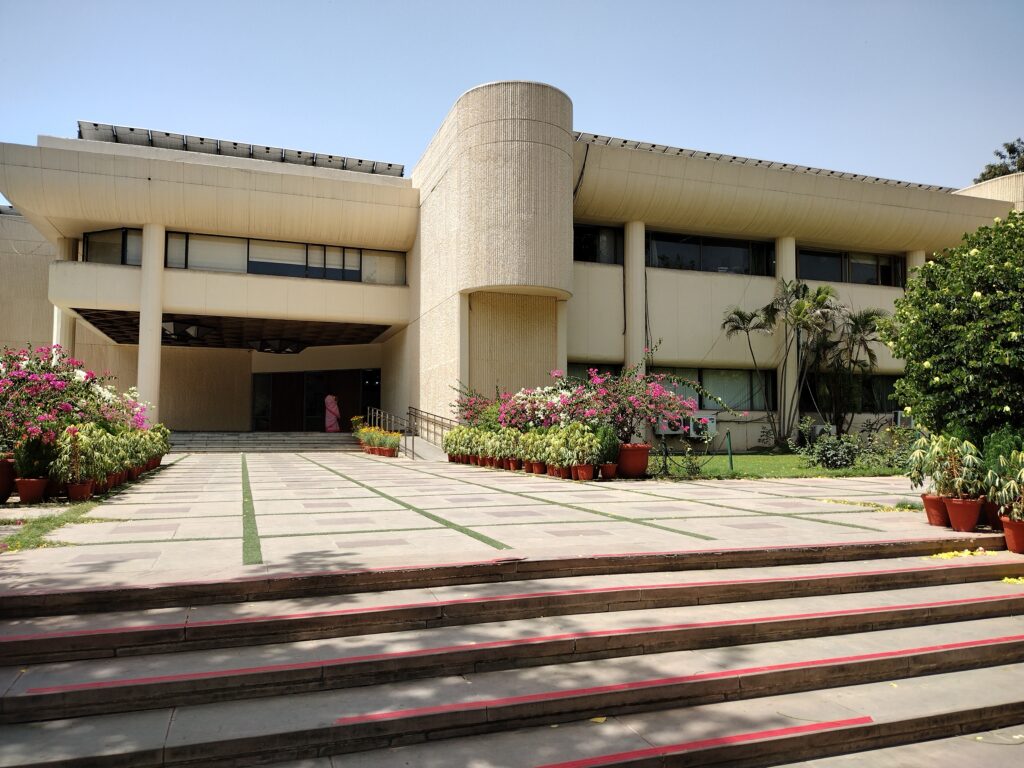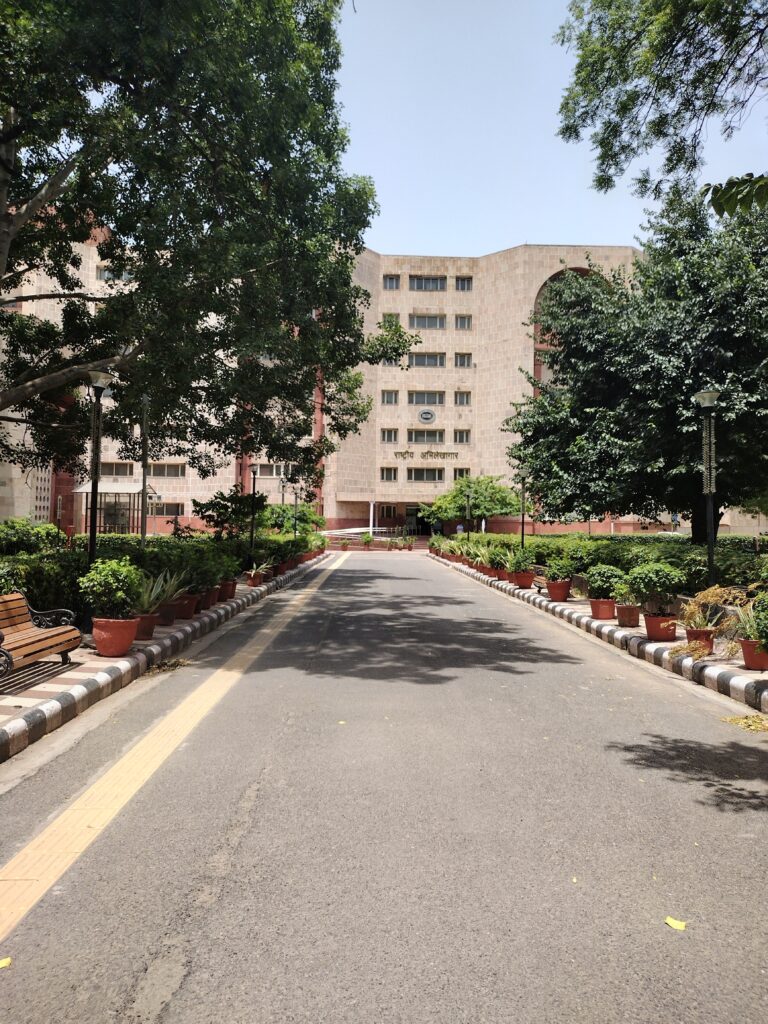By Udeepta Chakravarty, 7/8/2023.

During my trip, I visited the National Archives, Bihar state archives, and Nehru Memorial Museum and Library Archives. I have tried to cast as wide a net as possible and collected material that I will need a lot more time to process and digest. But I am also trying to be self-reflexive about my encounter, especially with state archives. In, however, limited and unsophisticated a way, I am trying to abide by Ann Laura Stoler’s call for an ethnographic encounter with the archives – one that focuses not only on the content or data but also on the form of the data. In other words, how does the archive, especially of the independent post-colonial state gets shaped and constituted through the discursive practices of the state? Stoler’s own programmatic text is to make historical scholars aware of how colonial archives are not mere sources but constituted as text themselves which represents and reifies a “colonial order of things,” but at the same time reveal “cross-sections” of contestations – which give rise to regularities and patterned modalities of knowledge production of the colonial state.
In the post-colonial period, especially in places like India, where a centralized state (largely inherited from the colonial powers) becomes the locus of politics and Governmentality – state archives get produced and reproduced through, for lack of a better formulation, a post-colonial statist order of things. Reading the post-colonial state’s archives along the grain, of course, will require a systematic effort to trace and map the rules and procedures of what is, and is not documented, how, and with what imperatives.
Of course, this is not the space to comprehensively take on this task. Instead, I want to offer two minor reflections and speculations on the state archives as text that revolves around change and transformation.
First, one problem that is perhaps more pronounced in the post-colonial and democratic setting is that based on the occupation of governmental power (by parties of differing political persuasions) state’s interests, practices, and objectives might undergo slight changes. I do not wish to assert that these are radical transformations in the state practices, but rather that there are ideological differences revealing themselves based on who occupies governmental power. The Bihar movement is a very good case in point.
As I mentioned in the last post, the Bihar movement was an anti-governmental movement that was one critical factor in the overdetermined context that led to the declaration of Emergency. As such, the inquiry into the Bihar movement by the state apparatus – for example, the Prime minister’s office, the Home Ministry, etc. – was to view it as a crisis of law and order and disruption which had to be diffused, managed, and neutralized. This is patently obvious in the declarations and justifications Indira Gandhi and other political figures provided for the Emergency. During the Emergency, the actors and opposition parties involved with the Bihar movement faced severe persecution. However, when the Emergency was lifted, the opposition parties (which included a whole range of political parties from the left and right) formed a precarious coalition – The Janata Party – which was able to defeat Indira Gandhi in the general elections of 1977 and then come to power.
This reversal – and it is of historical significance because this was the first time a non-congress government formed in post-colonial India – also meant that the state’s retrospective perspective changed. A Commission was set up by the Janata government, led by Justice Shah, to investigate the “excesses” of the Emergency. The Shah Commission report comprehensively documented the horrors of the Emergency. My point is that this document, and the accompanying moralizing commentary on it – the revelation of truth, vindication of the persecuted, etc. – shows how with change in government the very tenor of state power and gaze against its former wielders changes. The JP movement was rehabilitated and the Emergency was vilified.

The Bihar State Archives, just to drive home the point, published an 8-volume series on the Bihar movement in 2019 – which is largely sympathetic towards it and glorifies it as a high moment of democracy. This is not a trivial thing. One cannot say something similar about the Naxalite movement; the state’s production of knowledge on those activities– irrespective of who is in power – is to view it through the matrix of law and order and security.
I do not wish to overstate the case. Certainly, procedures of archival knowledge formation might involve the same techniques and modalities of perception and documentation, but political regimes with changing governments carry with them an ideological load that leaves discernible traces in the archive. To offer a reasonable contrast: the functioning, and the practices of knowledge production through archives, of the British colonial state, did not have significant changes based on whether the Tories or Labor was ruling the British government. In a liberal democratic post-colonial state, the transfer of power of governments has a more explicit expression in archival production.
Again, I do not wish to suggest that these are hugely transformative changes.
This brings me to my second set of reflections on the state archives – as these are more general and structural. This perspective is likely more interesting to trace more significant changes in the construction of archives.
First, the thought that occurred to me during the time I spent at the national archives was that I was inside the hippocampus of the Indian state – the state’s memory center. Upon further reflection, this is not a wholly silly metaphor. Historical scholars working with these archival materials construct narratives about the activities of the state, just like we build coherent narratives from a multitude of continuous experiences only partially sedimented (always through distortions) in our memory.
The Indian state constructs the archives according to archival acts. But there is a whole complex of practices involved in memory storage – a grammar of retention, preservation, and sometimes repression of memories of the state (who knows how many top-secret documents have never been declassified). Whatever the state learns and seeks to render legible (to use James Scott’s formulation) gets documented and, with varying degrees of likelihood, preserved.
Looking at the archive as the hippocampus of the state also might provide insight into deeper and more significant transformations in the functioning and practices of the state.
For example, one intuition I have, again from a superficial exploration, is concerning how the memory of the state changes as it transitions from a developmentalist to a neoliberal configuration. The Indian state, when it was mostly a dirigiste model, had to produce a lot of knowledge on the economy – the adoption of technologies, investment, licensing prices, industrial outlay, labor concerns, etc. The state’s practices constructed the knowledge complex of the “Indian economy.” The Planning Commission documents are an illustration of this. However, with greater privatization, delicensing, and neo-liberalization, in general, of India’s economy, the state’s knowledge and expertise on economic concerns has perhaps reconfigured, focusing more on things like contracts, ease of business, electronic payment systems, differentiated welfarism, etc. The best place to investigate this is to look at the content of the planning commission and its historical changes through the developmentalist era (1950-1985), the transition era (1985-2010), and then the neoliberal consolidation when the Planning Commission gets dissolved in 2014 and reconstituted as the Policy Commission (NITI Aayog). The apparatus of the state through these moments strives to construct norms and procedures for producing economic information, but in the context of changing priorities, expanding, or altering domains of expertise.
With the retreat in the economic domain, the state’s resources can also be redeployed to acquire greater legibility on other matters – securitization, for example. The implication of this is not only that neoliberalism – to the extent that one can talk of it as a coherent phenomenon – transforms the knowledge complex and rationalities of the state, but also its memory – the state learns to see different things, see things differently, and, as such, preserve memories differently.
